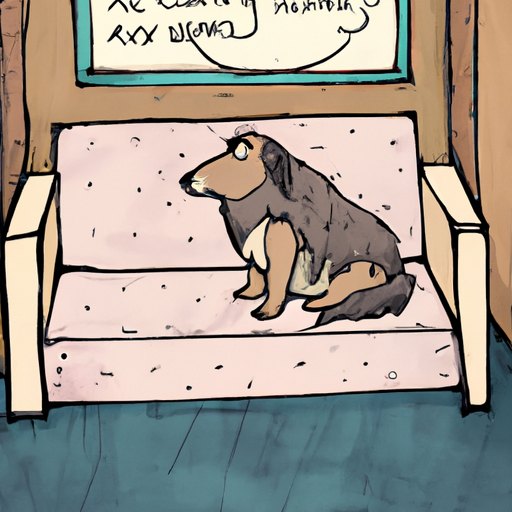Separation anxiety in dogs is a serious condition that can affect your furry friend’s overall quality of life. Understanding the symptoms can help you identify the problem and seek appropriate help.
What is Separation Anxiety?
Separation anxiety is an intense feeling of fear or distress that a dog experiences when separated from their owner or left alone. This fear is often due to the strong bond between you and your pet. The feeling is similar to the fear a young child feels when separated from a parent.
1. Excessive Barking or Howling
One of the first signs of separation anxiety in dogs is excessive barking or howling. When you leave the house, your dog may start barking or howling and continue for extended periods. This behavior is their way of expressing distress.
2. Destructive Behavior
Dogs with separation anxiety often turn to destructive behavior. This could involve chewing furniture, digging holes, scratching doors or windows, or other destructive activities. This behavior is not aimed to damage your property but is a sign of their distress.
| Behavior | Possible Cause |
|---|---|
| Chewing furniture | Separation Anxiety |
| Digging holes | Separation Anxiety |
| Scratching doors | Separation Anxiety |
3. Pacing
Another symptom of separation anxiety in dogs is pacing. This could be in a fixed pattern or randomly around the house or yard. The pacing usually begins when the dog realizes you’re about to leave.
4. Attempted Escapes
A dog suffering from separation anxiety may try to escape from the area where it’s left alone. This could result in self-injury like broken teeth, cut gums, or damaged nails.
5. Potty Accidents
Even house-trained dogs may urinate or defecate in the house when they’re experiencing separation anxiety. This is not a behavioral issue but rather a symptom of the distress they’re feeling.
6. Changes in Appetite
Some dogs might refuse to eat when left alone or even lose their appetite completely. You might notice a change in their eating habits or a loss of interest in treats or toys.
7. Excessive Salivation or Drooling
Excessive salivation or drooling is another sign of separation anxiety in dogs. This usually begins when the owner is about to leave and stops when the owner returns.
8. Coping Strategies
If you notice any of the above symptoms, it’s important to take action. Here are some strategies you can use to help your dog cope:
- Gradual Desensitization: Gradually increase the time you spend away from your dog, starting with short periods and gradually increasing the duration.
- Positive Reinforcement: Reward your dog for calm behavior, especially when you’re about to leave the house. This can help associate your departure with positive experiences.
- Professional Help: If the symptoms persist, it may be necessary to seek help from a veterinary behaviorist or a professional dog trainer.
FAQ
What triggers separation anxiety in dogs?
The exact cause is unknown, but it’s often triggered by a change in routine or environment, such as moving to a new house, a change in the family structure, or the death of a family member.
How is separation anxiety diagnosed in dogs?
A vet or a behaviorist will usually diagnose separation anxiety based on the symptoms and the dog’s behavior when separated from the owner.
Can separation anxiety in dogs be cured?
With proper management and treatment, most dogs can overcome their separation anxiety. This often involves behavioral training, environmental changes, and sometimes medication.
Should I punish my dog for behavior related to separation anxiety?
No, punishment can exacerbate the anxiety and the related behaviors. Instead, reward calm behavior and use positive reinforcement techniques.
Can separation anxiety cause physical problems in dogs?
Yes, severe cases of separation anxiety can lead to physical problems, such as gastrointestinal issues due to stress, injuries from escape attempts, and exhaustion from constant pacing or barking.
In conclusion, separation anxiety is a serious issue affecting many dogs. By understanding the symptoms and seeking professional help when necessary, you can help your furry friend live a happier, less anxious life.



